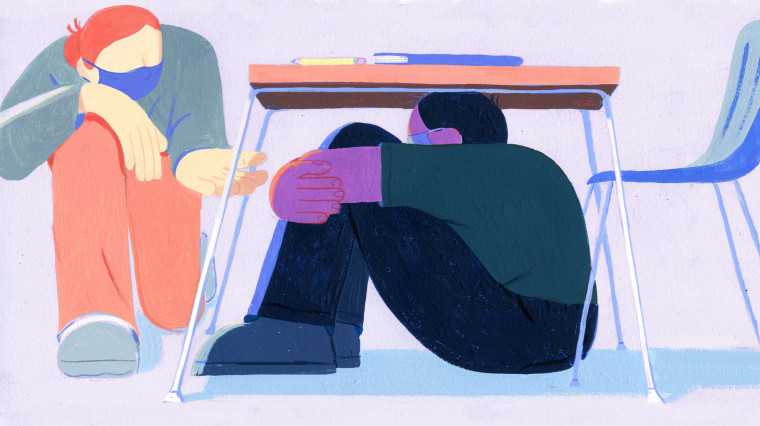A few things go through Tim Tredwell’s mind when he’s in the middle of an active shooter drill, leading his physical education class into the locker room at John Winthrop Middle School in Deep River, Connecticut. He thinks about which student has a special education plan, whether any of them do not handle trauma well, or if there’s one he’d have to carry if they had to run. He thinks of his own children.
Even when Tredwell knows it’s only a drill, he still feels a jolt of apprehension when the principal comes by to shake his door to ensure it’s locked. It’s been this way since the drills began shortly after the elementary school massacre in Newtown, Connecticut, in 2012.
“It kind of ended the gun control debate,” Tredwell said. “We saw kindergartners get killed and what changed? It’s clearly going to keep happening. So the question became, what do we do when they do?”
He added, “It’s the bizarre nature of where we are as a society.”
Active shooter drills became one of the most common school safety measures implemented nationwide in recent years, despite widespread fears that the procedures heighten anxiety, and evidence that school shooters, like the one in Parkland, Florida, use knowledge of the drills to their advantage. Teachers unions in February called for schools to not conduct active shooter drills with students. Now, new research adds data to those concerns.
A report released Thursday, obtained in advance by NBC News, found active shooter drills in schools correlated with a 42 percent increase in anxiety and stress and a 39 percent increase in depression among those in the school community, including students, teachers and parents, based on their social media posts.
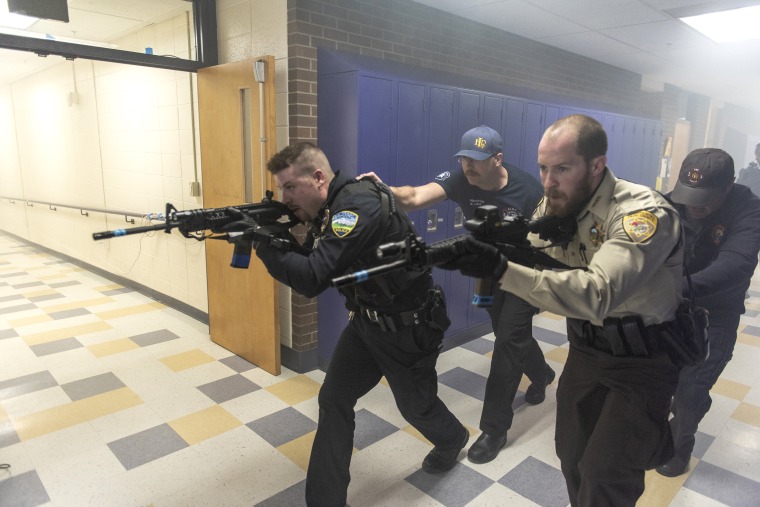
The report, released by the advocacy group Everytown for Gun Safety, relied on research from Georgia Tech’s Social Dynamics and Wellbeing Lab, which analyzed 27.9 million tweets and 1,454 Reddit posts that came from accounts with connections to 114 schools in 33 states that held active shooter drills in the 2018-19 academic year. The researchers examined changes in social media posts in the 90 days before and after a drill. The higher rates of anxiety and depression were evidenced by an increase in words such as “afraid,” “struggling,” “nervous,” “therapy” and “suicidal.”
“It wasn’t just a short duration that everybody shakes off — it’s having a lasting impression,” Sarah Burd-Sharps, Everytown’s research director, said.
This methodology is known as psycholinguistic analysis, and has been used by researchers to examine people’s attitudes over time, such as on college campuses following shootings and during COVID-19 lockdowns.
For more of NBC News' in-depth reporting, download the NBC News app
Munmun De Choudhury, a Georgia Tech computer scientist who led the school safety research, said they identified people connected to schools based on those who followed the school’s Twitter account, were geolocated within the district’s boundaries or mentioned the school on Reddit. The researchers then compared the changes before and after a lockdown exercise with a control group of social media users who had no connection to the school districts.
“We found the levels were nowhere close to what we see in our school communities after the drills,” she said.
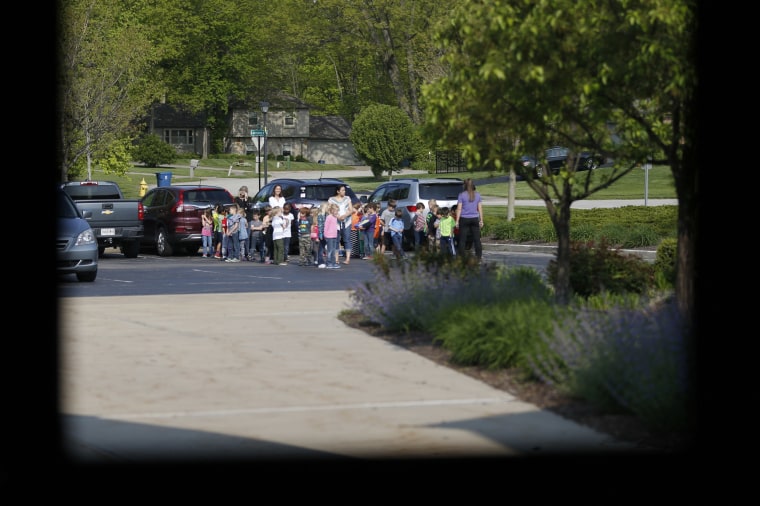
Practicing school lockdowns became more common following the 1999 shooting at Columbine High School in Colorado, and rapidly expanded as high-profile attacks took place in recent years. The portion of public schools conducting these drills grew from 40 percent in 2007 to 95 percent by 2017, as most states now require them. They’ll still be performed nationwide in the coming months for districts that are bringing children back on campus amid the coronavirus pandemic.
The exercises range from drills in which students and teachers go through the motions of turning the lights off and locking doors, to high-intensity exercises that involve actors portraying gunmen and victims while the sound of gunshots plays. The Trump administration’s 2018 commission report on school safety says each community should decide for itself what kind of lockdown exercises to conduct.
Last month, the American Academy of Pediatrics warned in a policy statement that the drills can cause students psychological harm and hinder decision-making by educators. Dr. David Schonfeld, lead author of the statement, said no school should conduct a high-intensity training that simulates an actual attack.
“When we do fire drills, we don't pretend there is a real fire — we don't play the sound of buildings crackling in flames,” Schonfeld said.
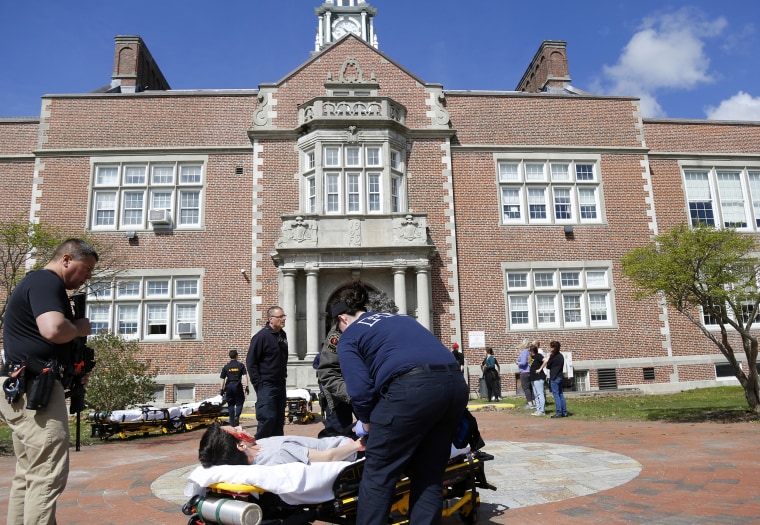
Critics say the drills have got out of hand in some districts, like at the Twin Lakes School Corporation in Indiana.
On Jan. 4, 2019, a Twin Lakes elementary school hosted a training conducted by the White County Sheriff’s Office. Deputies shot teachers at point blank range with airsoft guns during a mock execution, leaving staff bloodied and welted, according to a lawsuit filed last month against the sheriff’s office by eight educators.
Students were not present that day, but the suit states that the training was so traumatic that one educator retired early; another resigned; a third was diagnosed with post-traumatic stress disorder; and a fourth was so upset when the school later held a lockdown drill that she was shaking.
The White County Sheriff’s Office and the school district declined to comment.
The Indiana Legislature passed a law last year requiring each district conduct an active shooter drill in the first 90 days of the school, which the state has not waived in light of the COVID-19 pandemic. The Indiana State Teachers Association said it lobbied unsuccessfully to tack on a prohibition on the firing of plastic projectiles during the drills.
Everytown’s report included samples of social media posts about the lockdown exercises. In one, a parent describes their kindergartner being stuck in a bathroom alone during a drill, and that in “a new school even, she still has to use the bathroom in the nurses office because she has ptsd from that event.” In another, an educator wrote that after a drill, “We were in bathrooms crying, shaking, not sleeping for months. The consensus from my friends and peers is that we were not okay.”
“I hope at the very minimum, this shines a light on how severe some of the impact could be in the schools where these drills are implemented,” De Choudhury said.
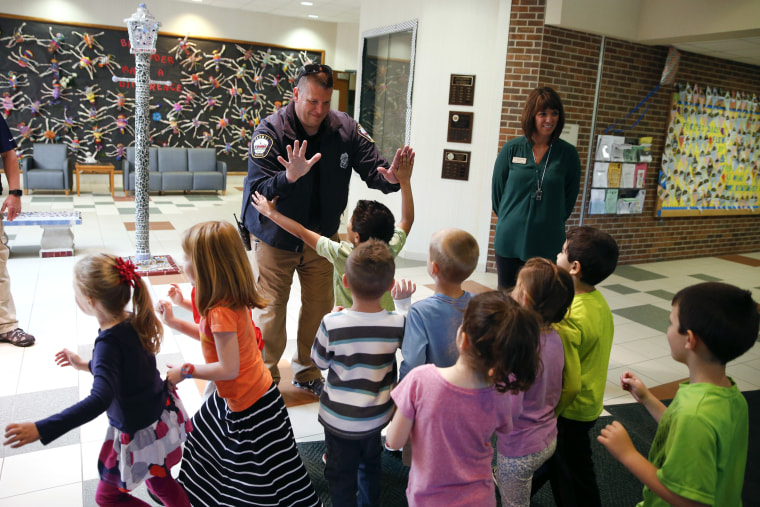
The report concludes that measures such as threat assessment programs and improved access to mental health professionals would be more effective than lockdown drills to keep schools safe. However, if schools are going to do drills, the report urges against mimicking an actual incident. Parents should also have advance notice, the report states, and “schools should track data about the efficacy and effects of drills.”
School safety consultant Tom Czyz, a former SWAT operator and homicide detective, agreed with many of the report’s recommendations. He believes there should be federal rules on what kind of active shooter drills schools can conduct, and that if a school is going to include students, they should calmly walk them through the steps.
“We’re traumatizing too many kids for the amount of shootings that go on,” Czyz said.
